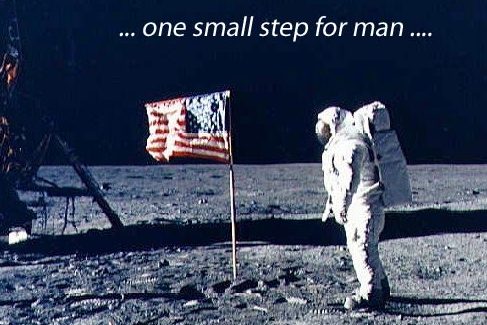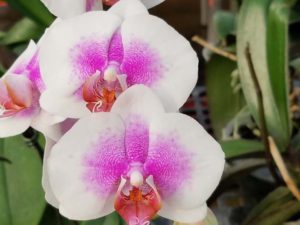
The One Per Cent Formula for Orchid Conservation
“I am just one person, and I have limited financial resources. What can someone like me possibly do to address the magnitude of environmental problems the world faces”?
This is a question we ask ourselves, and we usually come up short, trying to find a workable answer.
One one man refused to allow himself to be deterred by this dilemma. He knew that when a sizeable number of people work together they can solve problems and have an impact. He also knew that many people want to work toward change. The only question was, how to get these people together.
So, he decided that his job was to find a way to get all these interested people to join forces. He created a system whereby individuals, organizations and business could all work together to make a significant impact in preserving native habitats.
People working together is a formula for success
Orchid hobbyist and artist Mark Sullivan is the man, and the Orchid Conservation Coalition (OCC) is his system. By 2006 his project was a reality. Here’s how it works:
The coalition proposes that member societies donate one per cent of their net revenue to the conservation program of their choice. The Orchid Society of San Francisco was the first to join, followed by the Species Orchid Society of Western Australia as well as the Orchid Seedbank Project.
The One Per Cent Solution
 The idea of donating one per cent was a groundbreaking concept, quickly endorsed by the Orchid Digest, leading them to feature the OCC in their first quarterly issue of 2006. Ten years later OCC’s unique logo is recognized worldwide as a symbol of “sharing a collective responsibility and stewardship for nature”. These are the very appropriate words of Harold Koopowitz in his 2006 editorial, describing the yellow logo with the outline of a Phalaenopsis, now quite familiar to many of us.
The idea of donating one per cent was a groundbreaking concept, quickly endorsed by the Orchid Digest, leading them to feature the OCC in their first quarterly issue of 2006. Ten years later OCC’s unique logo is recognized worldwide as a symbol of “sharing a collective responsibility and stewardship for nature”. These are the very appropriate words of Harold Koopowitz in his 2006 editorial, describing the yellow logo with the outline of a Phalaenopsis, now quite familiar to many of us.
The uniqueness of this concept is aptly described by Wikipedia:
The Orchid Conservation Coalition’s structure is unique for a non-profit. It does not take contributions or distribute money itself. The member organizations in the coalition give directly towards orchid conservation. There is no fee to participate in the OCC. There are no board members. There are no decisions to be made because the organization is structured around agreements, and no money coming in to account for. No money means no need to incorporate. No donations accepted means no tax status.
The OCC was structured this way to eliminate cost and to direct energy and money directly to orchid conservation.
The OCC Grassroots Coalition has come a long way
 Today 23 orchid societies are involved, along with numerous businesses that share the same vision. Each participating organization displays the ‘One Percent For Orchid Conservation’ logo on its newsletters and websites as a “beacon to other groups to join in the cause”. Both AOS and the Orchid Digest now endorse the OCC.
Today 23 orchid societies are involved, along with numerous businesses that share the same vision. Each participating organization displays the ‘One Percent For Orchid Conservation’ logo on its newsletters and websites as a “beacon to other groups to join in the cause”. Both AOS and the Orchid Digest now endorse the OCC.
In the words of Mark Sullivan in the OCC website, this is a “grassroots coalition”. How it works is simple. Donor societies select the conservation effort that has the greatest appeal to them and send their conservation funds directly to that organization. The OCC never handles any funds. The member orchid society essentially makes a promise with itself to contribute each year to protecting orchids in the wild.
How to get involved in the OCC effort

North American Orchids
The well-designed OCC website offers suggestions of places to donate, along with a list of approved organizations, such as the Orchid Conservation Alliance (OCA). The OCA funds local entities such as the projects of Lou Jost in Ecuador or, more recently, the Dracula Reserve, also in Ecuador through Fundación EcoMinga. Recently the North American Orchid Conservation Center has been added to the list, with useful links to such items as the Go Orchids identification tool for north American orchids. There are 15 other non-profits listed, showing a wide spectrum of conservations efforts around the world.
OCC has valuable information for orchid enthusiasts
The OCC website is a testament to the dedication of Mark Sullivan in making conservation information accessible. It also features educational materials, such as informative essays on fund raising, speaker lists, videos of conservation, and more. Links to the websites of all the member organizations are also included.
Orchid Art By Charles Hess is the most recent donor business to be affiliated with OCC. Qualifying as a donor business was easy, since 100% of art revenue is donated to conservation.
SWROGA member societies have been showing a renewed interest in conservation. It seems appropriate, therefore, that SWROGA become a member of the Orchid Conservation Coalition as well. Membership in OCC would give us recognition for the growing commitment to conservation so many of our member societies have made this year. For the benefit of the many of our new members who have joined this year, the Greater North Texas Orchid Society is one of over 20 orchid societies making up the South West Regional Orchid Growers Association we just refer to as SWROGA.
Lesson learned: How starting small can lead to something big
Great ideas are often very simple, and usually start small. Mark Sullivan’s is a case in point. He had an idea of how individuals, orchid societies, and businesses could all be involved in orchid conservation. The beauty of his idea is that the process is totally seamless, involving no bureaucracy, with all funds going directly to the organizations doing the actual conservation work. It is this elegant simplicity which has made Mr. Sullivan’s project achieve such success in its eleven-year existence.
Oh, by the way, don’t be fooled by the photo at the top of the page. There are no orchids on the moon. But the message is still a good one.![]()